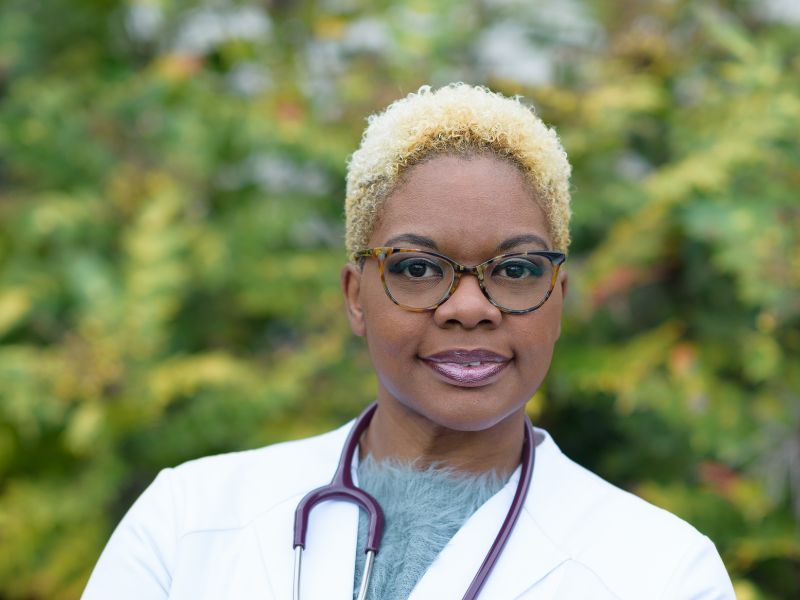Dear Hormone Hotties™,
I want to begin this article with something you rarely hear from a doctor:
I’m sorry.
I’m sorry for the confusion, the fear, and the silence around hormone therapy that has persisted for more than 20 years. I’m sorry for the generations of women—our mothers, sisters, aunties, and girlfriends—who were told to “grin and bear it” when their bodies were crying out for support. I’m sorry that so many were left to suffer, not because we didn’t have solutions, but because of one single study that reshaped everything: the Women’s Health Initiative, or WHI.
A Quick Guide Before We Dive In
I always like to tell people where we’re going—so you can come along with me, fully informed.
In this article, we’re going to explore four things that every woman navigating perimenopause and menopause deserves to understand:
● Why your doctor may not be talking to you about hormone therapy—and how a single study, released in 2002, created a culture of silence and fear in medical training for decades.
● What the WHI study actually said—and why it’s important to understand who was in it, what kind of hormones were studied, and how the results were misunderstood and misapplied.
● The truth about hormone therapy options—especially the critical difference between synthetic and bioidentical hormones, and why that distinction could change how you feel in your body.
● And finally: how we reclaim this conversation. It’s time to rewrite the narrative with evidence-based, compassionate care that puts women’s symptoms and stories at the center.
Ready? Let’s get into it.
I Was There When It Happened
I started my OB-GYN internship on July 1, 2002. Just 17 days later, we were informed that the WHI study had been halted and the findings were published and sent to the medical community. From there a media storm exploded almost overnight. The message to women and to the medical world was swift and terrifying: hormone therapy causes breast cancer, stroke, and heart disease.
Doctors panicked. Prescriptions were canceled. Women were left confused and untreated. And for those of us just beginning our medical training, the guidance was clear—stay away from hormone therapy.
But no one stopped to ask:
Who was actually in the study?
What kind of hormones were being used?
And what did the data really mean for women in their 40s and 50s?
The Study That Changed Everything
The Women’s Health Initiative (WHI) was a massive, government-funded research project backed by the Public Health Service Act. It enrolled over 161,000 postmenopausal women across 40 U.S. medical centers, making it the largest women’s health study ever conducted in this country.
Out of that group, only 16,608 women were placed in the hormone therapy arm. Researchers were testing two therapies:
● Conjugated equine estrogen (CEE) alone
● CEE combined with medroxyprogesterone acetate (MPA)—a synthetic progestin
Let’s pause and break that down in plain language:
CEE is a form of estrogen derived from the urine of pregnant horses. MPA is a synthetic progestin, meaning it acts like progesterone but is not the same as the progesterone your body naturally makes.
The average age of participants in the hormone therapy portion of the study was 63 years old. Most were well beyond the transition of menopause. In fact, only 3.5% of participants were between 50–54—the age when most women begin considering hormone therapy for symptom relief.
It’s like testing sunscreen on people who already have sunburn, and then deciding sunscreen doesn’t work. That’s how disconnected the study population was from the real-life needs of perimenopausal women.
What Got Lost in Translation: Fear, Not Facts
The WHI’s early data showed a modest increase in the risk of breast cancer, heart disease, stroke, and blood clots in the group taking both CEE and MPA. Those findings made the headlines and shook the medical world.
But here’s what never made the front page:
● The absolute risk increase was very small—less than 1 extra case per 1,000 women per year. Plainly stated: there was no significant risk above your baseline of simply being a woman.
● Women who took estrogen alone (CEE only) actually had a lower risk of breast cancer than those who took nothing at all.
● Starting hormone therapy within 10 years of menopause has been shown to have different, often protective effects on the heart and brain compared to starting it much later.
● The hormones used in the study were synthetic, not bioidentical.
Bioidentical vs. Synthetic: What’s the Difference?
Let’s talk about one of the most confusing—and most important—parts of this conversation: what kind of hormones we’re talking about.
You may have heard terms like “natural,” “bioidentical,” or “synthetic” used interchangeably. But let me break it down clearly:
● Synthetic hormones (like medroxyprogesterone acetate or MPA) are lab-made versions of hormones that are similar to, but not identical to, the ones your body naturally makes. Because their chemical structure is slightly different, they don’t always “fit” perfectly into your body’s hormone receptors. That imperfect fit can sometimes cause unwanted side effects.
● Bioidentical hormones, on the other hand, are molecularly identical to your body’s own estrogen, progesterone, or testosterone. They’re often derived from plant sources—like yams or soy—but what matters most is how they’re processed to match your biology exactly.
Think of your hormone receptors like locks.
A synthetic hormone is like a key that kind of fits—it might jiggle the lock open, but it’s not smooth.
A bioidentical hormone is the original key. It fits, turns, and unlocks your body’s function exactly how it’s supposed to.
When many women say, “I want something natural,” they’re usually not asking for something unprocessed or herbal.
What they really mean is:
“I want something that feels like what my body used to make.
” In most cases, that’s bioidentical.
So if you’ve ever said, “I just want a natural option,” I hear you. You want something that’s in sync with your system—not fighting against it. And that’s why understanding what’s bioidentical vs. what’s just called “natural” is so important.
One more thing: bioidentical does not mean “one-size-fits-all.” These hormones still need to be personalized, monitored, and adjusted based on your labs, symptoms, and goals. But when done correctly, they can be a powerful, effective tool to help you feel like you again.
Why Women Are Missing from Research—and Why It Matters
For decades, women were excluded from clinical trials. Why? Because our menstrual cycles were seen as “too complicated.”
Let that sink in:
We were considered too hormonal to study hormones.
That’s part of what made the WHI so historic—it centered women. But it still missed the women who needed answers the most: those in the hormonal transition of their 40s and early 50s.
That gap created confusion, fear, and mistrust that has lasted over two decades—and has impacted two generations of women.
Time to Reclaim the Narrative: Evidence-Based, Compassionate Care
It’s time to tell the truth—clearly and compassionately.
Hormone therapy isn’t one-size-fits-all. It’s not inherently dangerous. And it’s not something women should feel ashamed to ask about—or doctors afraid to discuss.
So let’s reset the conversation:
● Use science, not soundbites
● Offer options, not ultimatums
● Lead with compassion, not caution
● Treat the woman in front of us—not the ghost of a misapplied study
You deserve care that’s personalized, informed, and empowering. And that starts with knowing your options—not fearing them.
Final Thoughts
Over 20 years ago, I began my OB-GYN journey just as the WHI study brought hormone therapy to a screeching halt.
Today, I’m honored to be part of the movement bringing it back—with better understanding, better tools, and a deeper commitment to listening to you.
Because you’re not imagining things.
You’re not being dramatic.
You’re not broken.
You’re in the middle of a hormonal shift—and with the right care, you can feel strong, steady, and whole again.
Let’s take back our power, one hormone at a time.
Dr. LaKeischa McMillan OB-GYN | Integrative Hormone Specialist International Menopause Whisperer™





